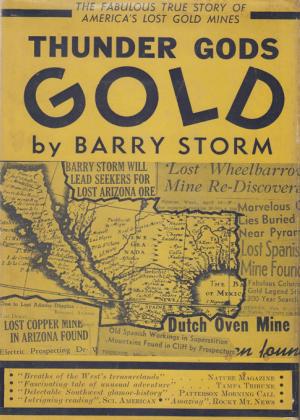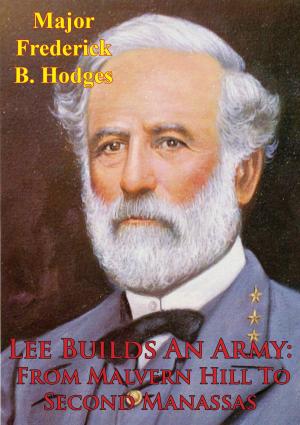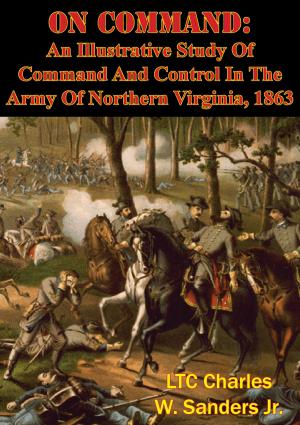Rosecrans’ Staff At Chickamauga
The Significance Of Major General William S. Rosecrans’ Staff On The Outcome Of The Chickamauga Campaign [Illus. Ed.]
Nonfiction, History, Modern, 19th Century, Americas, United States, Civil War Period (1850-1877), Military| Author: | Major Robert D. Richardson | ISBN: | 9781782895084 |
| Publisher: | Golden Springs Publishing | Publication: | August 15, 2014 |
| Imprint: | Golden Springs Publishing | Language: | English |
| Author: | Major Robert D. Richardson |
| ISBN: | 9781782895084 |
| Publisher: | Golden Springs Publishing |
| Publication: | August 15, 2014 |
| Imprint: | Golden Springs Publishing |
| Language: | English |
Illustrated with 23 maps and plans of the campaign and engagements at Chickamauga.
Probably the most unpredictable variable in the "Fog of War" next to leadership, is the command and control process, comprised of three components: organizations, process, and facilities. Organizations include the formulation of staffs by the commander to accomplish the mission. Incorporated in the organization of the staffs are the roles, responsibilities, and functions. Large Civil War armies like the Army of the Cumberland and the Army of the Tennessee required significant numbers of staff officers to support the armies logistically and to maneuver them operationally. During the Campaign and Battle of Chickamauga, these staff officers often played major roles and were instrumental in determining the outcome of the battle. The roles and functions performed by these staff officers evolved through the history of conflict. This study is an analysis of the roles, responsibilities, and functions of General Rosecrans’ staff prior to and during the Chickamauga campaign, using lessons learned in comparison to current Army doctrine on command and control. Primary sources for staff information on the Army of the Cumberland are the Official Records and actual telegrams from the staffs during this period. Doctrinal manuals on senior level staffs did not exist; therefore, these staffs were composites of regimental and War Department staff positions and ad hoc positions. The study uses evolving doctrine from Command and General Staff College that defines an outstanding staff as one that informs, anticipates, coordinates and executes the commander’s guidance with enthusiasm and innovation. This study concludes that Rosecrans’ staff was significant to the outcome of the Battle of Chickamauga. Although none of the staff functions developed critical deficiencies during the campaign, their inability to relieve the commander of administrative burdens compelled him to abandon the battlefield.
Illustrated with 23 maps and plans of the campaign and engagements at Chickamauga.
Probably the most unpredictable variable in the "Fog of War" next to leadership, is the command and control process, comprised of three components: organizations, process, and facilities. Organizations include the formulation of staffs by the commander to accomplish the mission. Incorporated in the organization of the staffs are the roles, responsibilities, and functions. Large Civil War armies like the Army of the Cumberland and the Army of the Tennessee required significant numbers of staff officers to support the armies logistically and to maneuver them operationally. During the Campaign and Battle of Chickamauga, these staff officers often played major roles and were instrumental in determining the outcome of the battle. The roles and functions performed by these staff officers evolved through the history of conflict. This study is an analysis of the roles, responsibilities, and functions of General Rosecrans’ staff prior to and during the Chickamauga campaign, using lessons learned in comparison to current Army doctrine on command and control. Primary sources for staff information on the Army of the Cumberland are the Official Records and actual telegrams from the staffs during this period. Doctrinal manuals on senior level staffs did not exist; therefore, these staffs were composites of regimental and War Department staff positions and ad hoc positions. The study uses evolving doctrine from Command and General Staff College that defines an outstanding staff as one that informs, anticipates, coordinates and executes the commander’s guidance with enthusiasm and innovation. This study concludes that Rosecrans’ staff was significant to the outcome of the Battle of Chickamauga. Although none of the staff functions developed critical deficiencies during the campaign, their inability to relieve the commander of administrative burdens compelled him to abandon the battlefield.




![Cover of the book The Story Of A Common Soldier Of Army Life In The Civil War, 1861-1865 [Illustrated Edition] by Major Robert D. Richardson](https://www.kuoky.com/images/2015/november/300x300/9781786251183-4wVL_300x.jpg)







![Cover of the book Colonel John Pelham: Lee's Boy Artillerist [Illustrated Edition] by Major Robert D. Richardson](https://www.kuoky.com/images/2014/august/300x300/9781782898436-d99G_300x.jpg)


